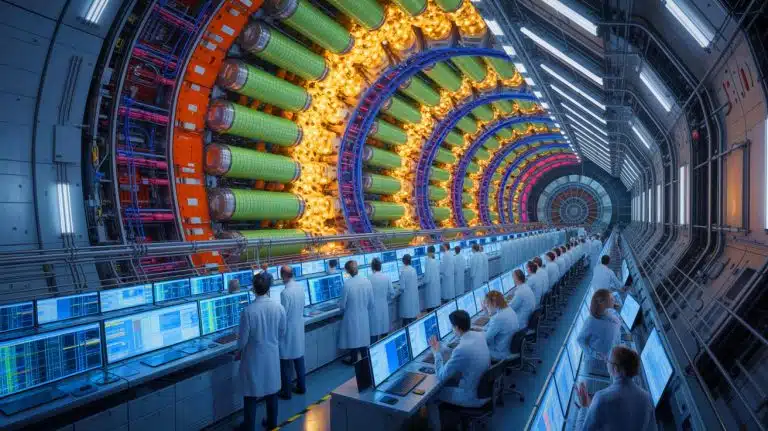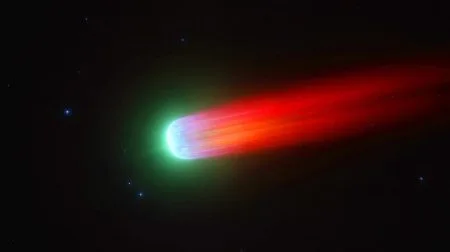| IN A NUTSHELL |
|
The world of particle physics continues to push the boundaries of what is possible, as evidenced by recent findings at the Large Hadron Collider (LHC) on the French-Swiss border. Researchers at the LHC have detected the creation of gold nuclei during a unique set of interactions known as ultra-peripheral collisions. This discovery, facilitated by scientists from the University of Kansas (KU) working on the ALICE experiment, highlights the potential of advanced detection techniques. As plans to construct even larger colliders emerge, understanding the byproducts of such experiments becomes increasingly vital.
Understanding Ultra-peripheral Collisions
In the realm of particle physics, the focus often lies on the aftermath of high-speed collisions. However, a different approach has gained attention through the work of Daniel Tapia Takaki and his team at KU. Their interest lies in ultra-peripheral collisions (UPCs), where particles nearly collide but do not physically touch each other. These near misses allow for a unique type of interaction.
During UPCs, heavy ions with numerous protons in their nuclei generate powerful electric fields. As these ions accelerate, they emit photons or light. This light, when energetic enough, can penetrate deeply into another nucleus, offering a high-energy glimpse without the typical debris of a full collision. This process, known as photon-photon collision, is significant because it results in cleaner interactions compared to traditional collider experiments.
Jaya Anand Singh’s Research Path : A Journey from Curiosity to Contribution
Spotting Clean Collisions
The clean nature of photon-photon collisions presents both challenges and opportunities. Takaki and his colleagues have developed innovative techniques to detect these interactions, which often go unnoticed in the particle physics community. The energy from these collisions can eject protons from a nucleus, leading to the transformation of elements.
For instance, the ejection of protons can change lead into thallium, mercury, or even gold. This phenomenon was observed in the LHC, where the detection of gold nuclei occurred. The KU team’s technology played a crucial role in capturing these fleeting particles, some of which can trigger safety alarms within the collider.
Preparing for Larger Colliders
As the scientific community looks to the future, plans are underway to develop colliders that are significantly larger than the current LHC. Some proposals suggest facilities up to 60 miles long. With such ambitious projects, understanding the byproducts and nature of collisions becomes increasingly important.
Researchers are keen to study the various interactions that take place within these particle accelerators. The clean collisions observed in UPCs offer a valuable perspective, as they provide insights without the complexity of particle sprays. The work at the LHC serves as a foundation for future experiments, where precise detection and understanding of these interactions will be crucial.
The Role of Advanced Detection Techniques
The detection of gold nuclei at the LHC is a testament to the advancements in particle detection techniques. The technology developed at KU has paved the way for identifying short-lived particles and understanding their behavior. These advancements not only contribute to scientific knowledge but also ensure the safety and efficiency of collider operations.
As researchers continue to explore the possibilities within particle physics, the role of innovative detection methods cannot be overstated. These techniques enable scientists to capture and analyze interactions that were previously difficult to study. The findings from the ALICE experiment demonstrate the potential of such approaches, laying the groundwork for future discoveries.
The ongoing research at the LHC and the development of larger colliders pose intriguing questions about the future of particle physics. As scientists delve deeper into the nature of ultra-peripheral collisions and their byproducts, what new insights into the fundamental nature of matter might they uncover?
Did you like it? 4.8/5 (20)






Wow, are we really turning lead into gold? Sounds like magic! 🧙♂️
Can someone explain how these ultra-peripheral collisions work? I’m fascinated! 🤔
Is this the end of the gold market as we know it? Investors beware! 💸
Great article! Thanks for sharing these groundbreaking findings. 🙌
Science fiction is becoming science fact. Who would’ve thought! 🤯
How much gold are we talking about here? Is it economically viable?
This is amazing news! Can’t wait to see more discoveries like this. 🚀
Are there any environmental impacts of these experiments? 🌍
I don’t buy it. Sounds too good to be true. 😒
Thanks for the article! More of this type of content, please.
What’s next, turning water into wine? 😂🍷
How long until we see practical applications from this research?
Is this technology safe? Any risks involved? 🧪
Can’t help but feel a little skeptical. Where’s the catch? 🤨
Absolutely fascinating! Keep pushing those boundaries, scientists! 🔬
Does this mean we can finally pay off our student loans with gold? 🤩
Is there any potential for weaponizing this technology? 😬
Thank you for explaining such a complex topic so clearly!
What does this discovery mean for the future of particle physics?
Are we messing with forces we don’t fully understand? 😟
So, when do I get my gold bar? Asking for a friend. 😅
Why is there anger in the global science community about this?
Can this lead to cheaper electronics, since gold is used in them?
Does this mean gold prices will drop? Should I sell my jewelry? 📉
How reliable are these findings? Could it be a fluke? 🤔
Is this discovery peer-reviewed? I’d love to read more about it.
What are the implications for other elements? Can we create anything else? 🔄
This sounds like a plot from a sci-fi novel. Unbelievable! 📚
Can’t help but think of the philosopher’s stone. Is this the real deal? 🪄
How does this discovery affect current physics theories? Will we need to rewrite them?
Thank you, researchers! Your work is truly inspiring! 🌟